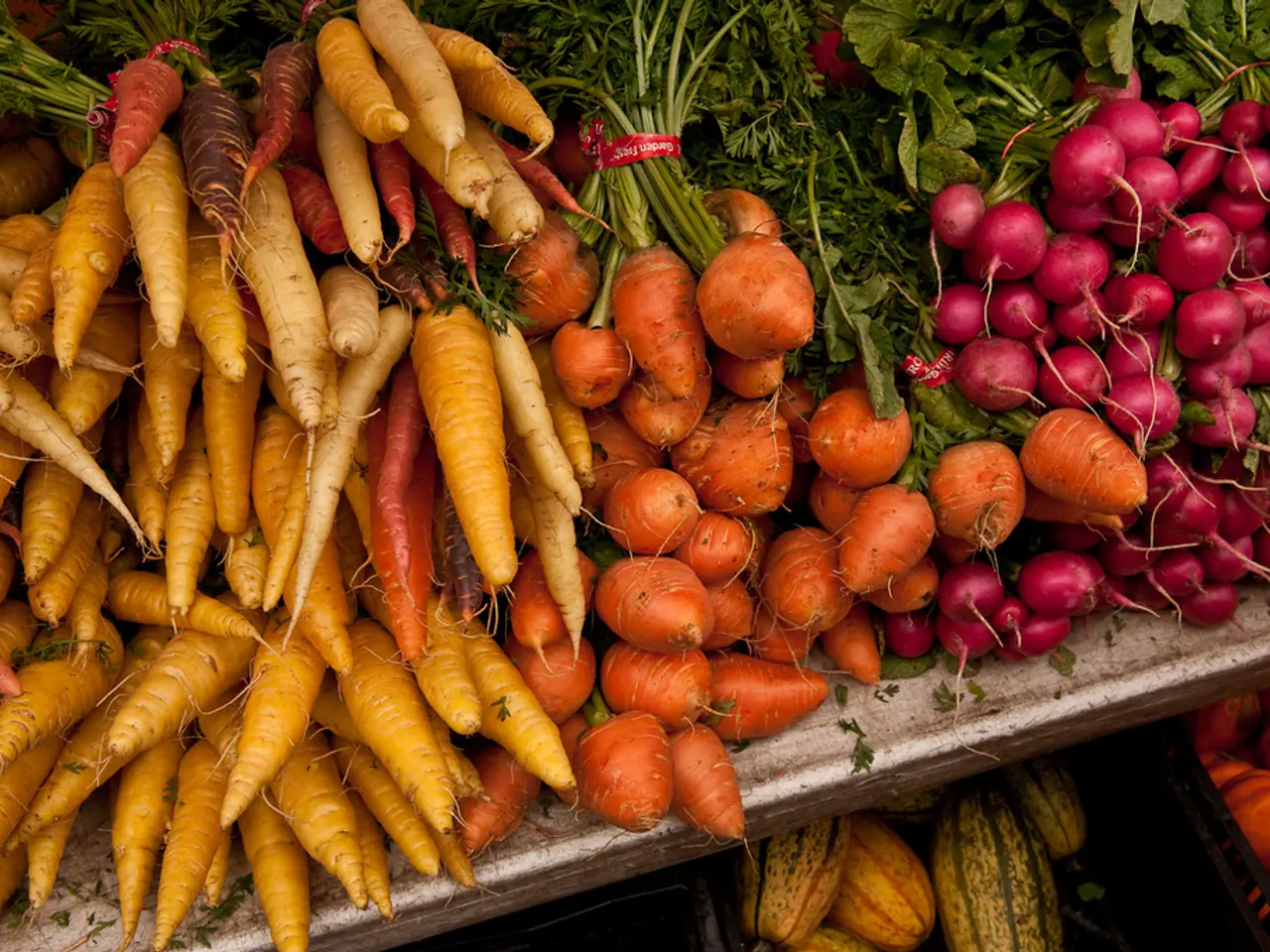Guide for Preparing Soil for Planter Containers: Steps to Follow
In the world of container gardening, having the right soil mix is essential for a thriving garden. Here's a step-by-step guide on how to choose and prepare the perfect soil for your planter box.
First and foremost, it's important to clear any debris and old roots from your planter box before adding soil. This ensures a clean and healthy start for your new plants.
Next, loosen the soil or potting mix to ensure good aeration and root penetration. Aim for at least 8-12 inches of depth if possible. This will provide enough space for your plants' roots to grow and thrive.
To enhance fertility, drainage, and moisture retention, mix in 2 to 3 inches of organic matter, such as aged compost or manure. This will also improve the soil structure, making it more suitable for container gardening.
Consider a soil mix blend like 35% well-rotted manure or compost, 40% sandy loam, and 25% peat moss or coconut coir (a sustainable alternative to peat). Avoid pure soilless mixes that degrade quickly.
For optimal vegetable growth, test and adjust the soil pH to an optimal range of 6.0 to 7.0. You can add lime for acidity or sulfur for alkalinity if necessary.
To create a long-lasting and healthy planter soil, avoid compacted garden soil and instead use or build a high-quality potting mix that retains moisture yet drains well. This will prevent waterlogging and root rot common in planter boxes. Adding mulch on top can help retain moisture and suppress weeds if the planter is outdoors.
When filling a raised bed, a nutrient-rich compost mix (homemade or commercially-produced) is ideal. If you're building a planter box on grass, mow the grass or weeds as close to the ground as possible, then cover the area with cardboard.
Remember, shallow-rooted plants need 6–8 inches, medium-rooted need 10–12 inches, and deep-rooted plants require 12–18 inches of soil depth.
To check the soil density, observe the water drainage speed. A well-draining soil mix should allow water to pass through quickly.
Use a soil calculator to help determine the amount of soil needed for your planter box.
Lastly, consider adding perlite or coarse sand to improve drainage in the soil mix. You can also use the lasagna gardening or no-till gardening method to create layers in the planter box for a more sustainable approach.
By following these steps, you'll have a nutrient-rich, loose, well-draining, and sufficiently deep soil mix, tailored to your plants' root depth, ensuring the best results in your planter box. Happy gardening!
[1]: Source for root depth requirements [2]: Source for clearing debris, loosening soil, adding organic matter, and testing soil pH [3]: Source for avoiding compacted garden soil and using a high-quality potting mix [4]: Source for soil mix blend and organic matter options [5]: Source for water drainage and mulch benefits
For a thriving vegetable gardening experience in a planter box, it's crucial to start with a clean soil base, so remove any debris and old roots. After loosening the soil, consider a soil mix blend of well-rotted manure or compost, sandy loam, and peat moss or coconut coir for a balanced and sustainable gardening lifestyle in the home-and-garden context.




